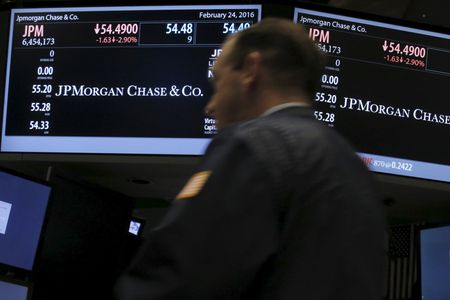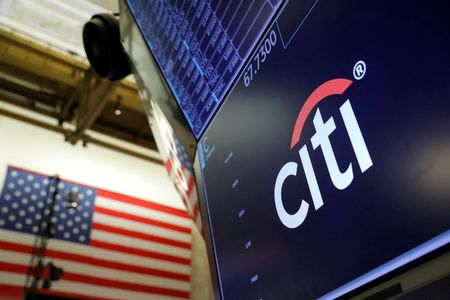



By Saeed Azhar and Niket Nishant
NEW YORK (Reuters) – JPMorgan Chase & Co and Bank of America Corp continued to add staff as the economy softens, even after the ranks of the five biggest U.S. lenders swelled by 100,000 since the start of 2020.
The chief financial officers of the two biggest U.S. banks said they would hire selectively despite waning economic growth.
JPMorgan’s Chief Financial Officer Jeremy Barnum said the bank is still hiring and “in growth mode” in a call with journalists to discuss the bank’s fourth-quarter earnings.
The bank’s headcount will probably rise modestly, although “there will be different adjustments at different times, and we’re seeing that all across the company,” Barnum said.
Bank of America also continues to hire, particularly in wealth management, while also remaining disciplined on its expenses, Chief Financial Officer Alastair Borthwick told reporters on Friday. Its workforce swelled to 216,823 at the end of 2022 compared with 208,248 a year earlier.
“We don’t have any plans for mass layoffs,” he said.
The banking giants stood by their hiring plans even as other lenders cut staffing in investment banking and mortgages.
The projections came after Goldman Sachs Inc became the first major bank to commence large layoffs this year, letting go of more than 3,000 employees in its biggest round of job cuts since the 2008 financial crisis.
BNY Mellon plans to cut around 3% of its workforce this year, a source familiar with the matter told Reuters on Friday.
Among the top six banks, JPMorgan, Bank of America, Citigroup Inc, Wells Fargo & Co, Goldman Sachs and Morgan Stanley added over 100,000 jobs from the first quarter of 2020, based on their fourth and third quarter figures.
Wells Fargo bucked the trend, reducing its headcount by nearly 21,000 in the same period.
GRAPHIC: Big U.S. banks have added thousands of job since 2020 (https://www.reuters.com/graphics/USA-BANKS/znvnbzkxwvl/chart.png)
Goldman had hired 10,600 people since the start of the pandemic, including staff for Marcus, its consumer banking unit that was scaled back in October after losing money.
“It is a safe bet to say more banks might follow as banks struggle to make the math work from a bonus perspective and adjust to lower deal volumes,” Natalie Machicao, vice president at executive search firm Sheffield Haworth in New York.
“Other banks are making cuts, with equity capital markets and leveraged finance more deeply affected than coverage or M&A,” she said, noting that the trims were happening on an individual basis or smaller scale rather than a large reduction in force.
Goldman’s cost cuts reflect its reliance on investment banking and trading, which accounted for about 65% of its revenue in the third quarter of 2022, as the dealmaking drought eroded profits. That compares with Morgan Stanley, where the comparable businesses made up 45% of its revenue in the same period.
Dante DeAntonio, a director of economic research at Moody’s, said employment in finance and insurance plateaued in the fourth quarter and started to decline in December.
That masked a weaker trend in the credit intermediation or banking, which has declined modestly over the last 6 months after staying flat for most of 2021 and early 2022, he said.
“We expect payrolls to remain flat to slightly down throughout this year with the most risk coming from the residential and commercial lending divisions within these institutions,” DeAntonio said. “In some sense, the tide has already turned.”
(This story has been refiled to add the missing word ‘lenders’ in the lead)
(Reporting by Saeed Azhar, Lananh Nguyen and Niket Nishant; Editing by Lananh Nguyen and Nick Zieminski)

